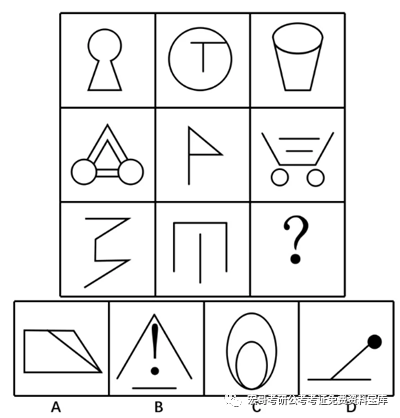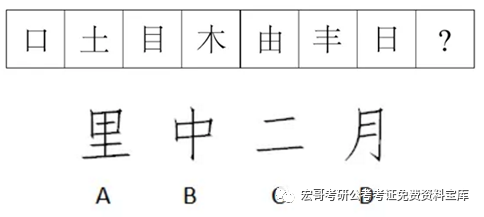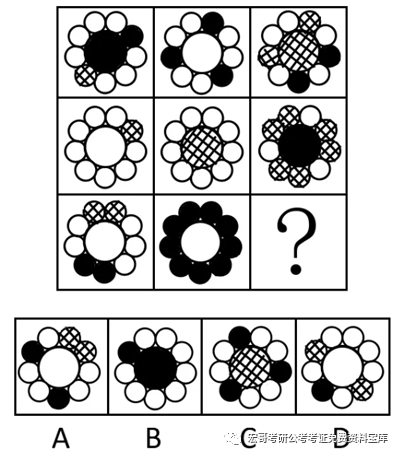Recently, some friends have been complaining that this period is the longest preparation cycle they have ever experienced, learning and forgetting, then learning again until they feel nauseated. But are some people already slacking off, thinking they can do anything but study? How can that be acceptable? Today, let’s learn some practical tips! What are we learning? Spatial reasoning! This seemingly simple but frustrating module. First, let’s take a look at the knowledge system of spatial reasoning.

Everyone may have organized the key points of spatial reasoning, but when it comes to solving problems, they just can’t find the patterns. It feels like what they’ve learned is completely useless, and when they see the answers, they think, “Wow, the patterns are so simple, how did I not see that?”
Not being able to find the patterns or analyze the questions may be because you lack sensitivity to the questions and can’t find the breakthrough. Moreover, spatial reasoning can have many innovative testing methods, such as combining several knowledge points together. If your knowledge is too narrow and your thinking isn’t broad enough, it can be tough. So we can’t just focus on the existing knowledge points; we need to continually learn, summarize, and think based on a solid grasp of the basics.
Now, let’s see how many of these spatial reasoning questions, which have a correct rate of about 30%, you can answer correctly.
1. Classify the six shapes below into two categories, ensuring that each category has its own common features or patterns. The correct classification is ( )

A. ①②⑤, ③④⑥
B. ①②③, ④⑤⑥
C. ①③⑤, ②④⑥
D. ①②⑥, ③④⑤
【Answer】C. Many people’s first reaction to the question is to count the number of intersections and straight or curved lines, but after verification, they find that doesn’t work, so they get stuck. The breakthrough for this question lies in shapes ② and ④. Shape ② is a deformation of the character 日, and shape ④ is a deformation of the character 田, considering the number of strokes as a test point.
It can be observed that shapes ①, ③, and ⑤ each have an odd number of points equal to 4, while shapes ② and ④ have an odd number of points equal to 2, and shape ⑥ has no odd points. Hence, ①, ③, and ⑤ are two-stroke shapes, while ②, ④, and ⑥ are one-stroke shapes.
Thus, the correct answer is C.
2. Choose the most suitable option to fill in the question mark, so that it conforms to the overall pattern of the shapes ( )

【Answer】A. Everyone should be able to see that each shape has a pair of identical angles, and from left to right, they are acute, right, and obtuse angles. The first two rows follow this pattern, and the third row should too, but there are no options that fit the answer. Thus, you might overturn this pattern and start looking for something else.
We can also start from the options. Only option A has two identical right angles, while B, C, and D do not have two identical angles. Therefore, option A is chosen. This question only requires consideration of each figure having two identical angles, without needing to consider the size of the angles, which is the flexible part.
Thus, the correct option is A.
3. From the four options given, choose the most suitable one to fill in the question mark, so that it presents a certain regularity ( )

【Answer】D. This question looks simple, but the correct rate is only 27%.
Observing the question, shapes 1, 3, 5, and 7 have closed areas, so we should prioritize considering closedness. Shapes 1, 3, 5, and 7 have closed areas, while shapes 2, 4, and 6 do not. Therefore, the option should be one without a closed area, eliminating A and B. Comparing C and D, we find that C has two parts, while D has one part, and the question is about one part.
Thus, the correct answer is D.
4. From the four options given, choose the most appropriate one to fill in the question mark, so that it presents a certain regularity ( )

【Answer】D. This question tests a very simple knowledge point traversal. In the question, there are three types of elements: white circles, black circles, and mesh circles. Observing the frequency of element appearances, except for the small circle in the lower right corner that has never appeared as a mesh circle, each type of element has appeared at least once in other circle positions, and only option D has a mesh circle in the lower right corner.
Thus, the correct answer is D.